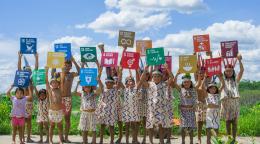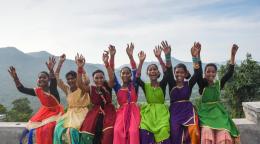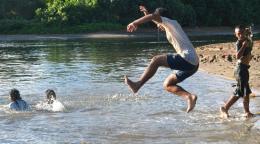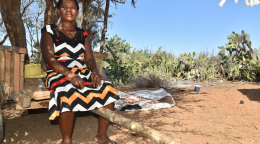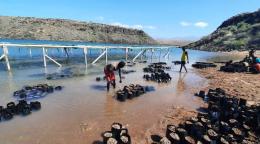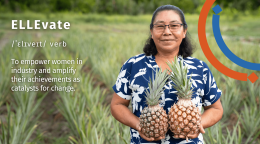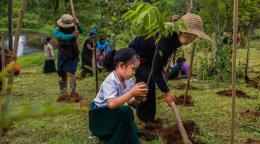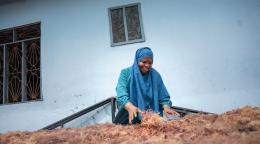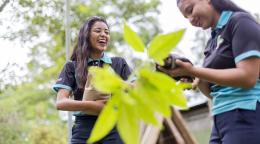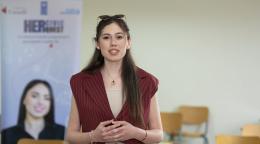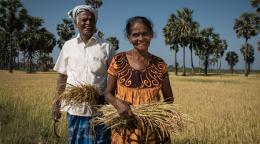United for Land: Saudi Arabia's Local Heroes Combat Desertification
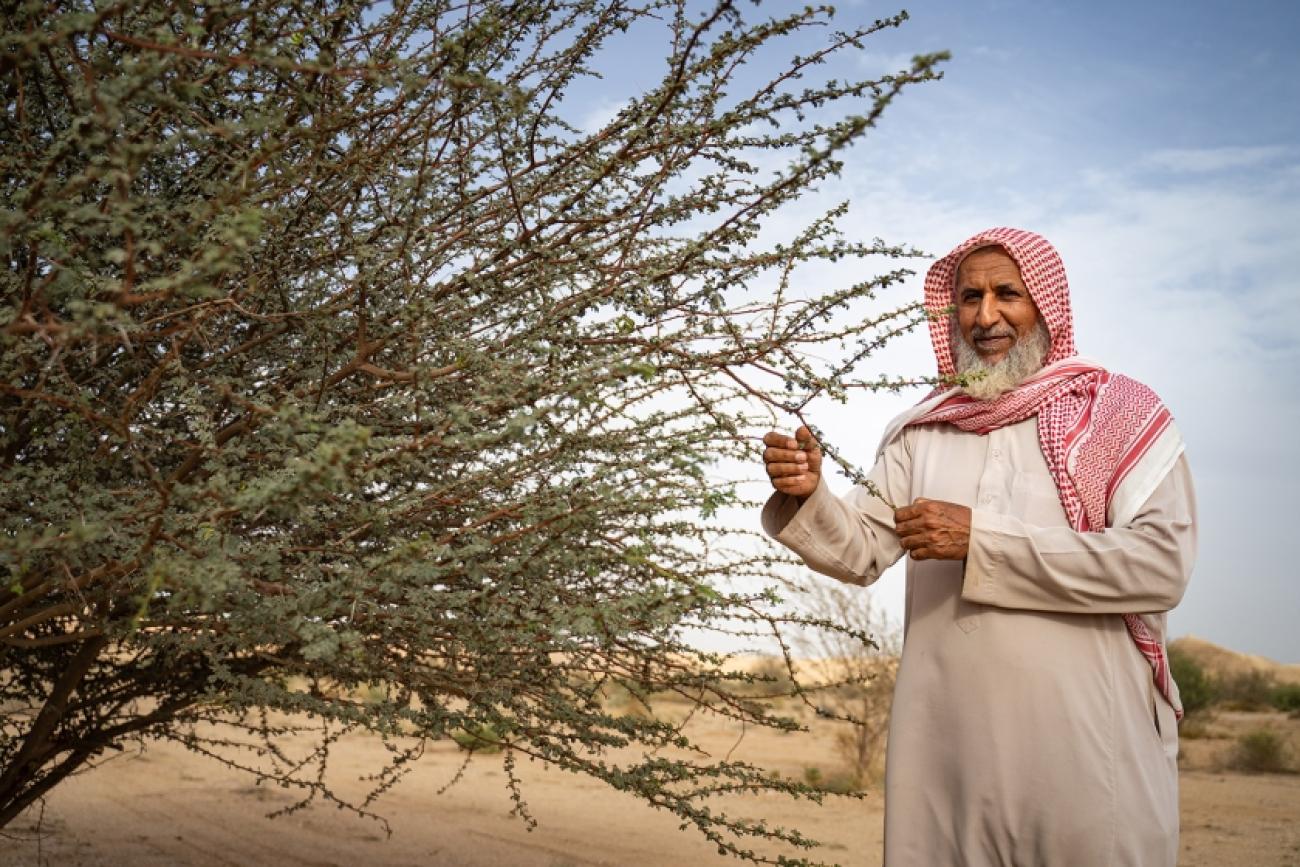
In Saudi Arabia, land stewardship is an indispensable part of economy and identity. Over the years, rapid development and overgrazing, combined with rising temperatures have threatened soil quality and biodiversity, and exacerbated water scarcity.
Combating desertification has fast become a pressing concern for the country. With the aim of restoring 200 million hectares of degraded land at home and abroad, Saudi Arabia has extended safeguards for 18 per cent of its land, up from 4 per cent earlier, and has steadily increased the number of national parks.
In December this year, the country is all set to host the 16th Conference of Parties for the UN Convention to Combat Desertification in Riyadh. This conference will convene global leaders to address the urgent need to halt and reverse land degradation, with a goal to restore 1.5 billion hectares of degraded land, globally, by 2030.
Under the leadership of UN Resident Coordinator Mohamed El Zarkani, UN entities are joining hands to bolster the Kingdom’s initiatives to promote land restoration and climate resilient practices. Collaborations among diverse stakeholders and the United Nations Environment Programme (UNEP), the Food and Agriculture Organization (FAO), and the United Nations Convention to Combat Desertification (UNCCD) are ensuring that there is a united commitment to sustainable land management.
“I applaud Saudi Arabia's regional and global leadership on land restoration and drought resilience," said the Resident Coordinator. "We witnessed this leadership in initiatives such as the Saudi Green Initiative, Middle East Green Initiative, and G20 Global Land Initiative - all Saudi driven efforts built on international cooperation and partnership and culminating towards key global commitments to protect and restore lands. Hosting COP16 in Riyadh this year will be another key milestone in Saudi Arabia’s inspiring journey to combat desertification. Collaboration between the Saudi government, local communities, and UN Agencies, Funds, and Programmes, is a central feature to drive the land agenda forward while exemplifying the power of partnerships."
A few weeks ago, Saudi Arabia hosted World Environment Day, focusing on land restoration, desertification, and drought resilience. UNEP Executive Director Inger Andersen emphasized: “Land degradation, desertification and drought are not only arid nation problems. They are global problems,” underscoring the necessity of collective action.
The government, represented by the Ministry of Environment, Water, and Agriculture, is working closely with community leaders to implement nature-based solutions that combat desertification and drought, restoring the land.
Saudi Arabia's Local Heroes in Land Restoration
Abdullah Ibrahim Alissa: Reviving Thadiq National Park
Abdullah Ibrahim Alissa stands on a rocky outcrop in Thadiq National Park, a sprawling expanse of arid land north of Riyadh. As the park’s manager, Alissa has overseen the transformation of this area from desert to a thriving nature spot. Beneath him, steep terraces lined with carefully cultivated shrubs and small trees flourish, a testament to the successful afforestation projects he has spearheaded.

"I grew up in this area, and since childhood, I have seen it deteriorate and become a desert," Alissa shares. Through dedicated efforts under the Saudi Green Initiative, involving planting 250,000 trees and 1 million shrubs, the park has steadily been rejuvenated. Alissa’s work highlights the significant impact of community-driven restoration efforts and showcases the potential for reversing desertification through local action. Focusing on nature-based solutions to restore degraded land, the park has continued to grow trees in nurseries, planting mostly native species. Initiatives like these are marking the UN Decade on Ecosystem Restoration. Read more about Alissa’s story and Saudi Arabia’s trajectory to regreening here.
Sidr Al-Jawf Community: Resilience and Innovation in Al-Adhraa National Park
“Our strong bond with the land weaves us together, creating timeless connections that breathe life into our past, present, and future,” says a member of the Sidr Al-Jawf Community.
Situated near desert terrain, Al-Adhraa national park has a deep connection with the community influencing both recreational activities and the villagers' sense of identity. Observing the gradual decline of vegetation due to desertification, the community undertook a rehabilitation project in 2017. Despite initial setbacks due to insufficient support and technical knowledge, the group persisted.
“We never gave up! Drawing lessons from past setbacks, we formed a volunteer environmental team and set up the 'Al-Adhraa National Park' in a new location closer to the village,” shared a community member from Sidr Al-Jawf. Inspired by their resilience, FAO and Saudi Arabia’s National Center for Vegetation Development and Combating Desertification (NCVC) collaborated to support the larger Al-Adhraa community.
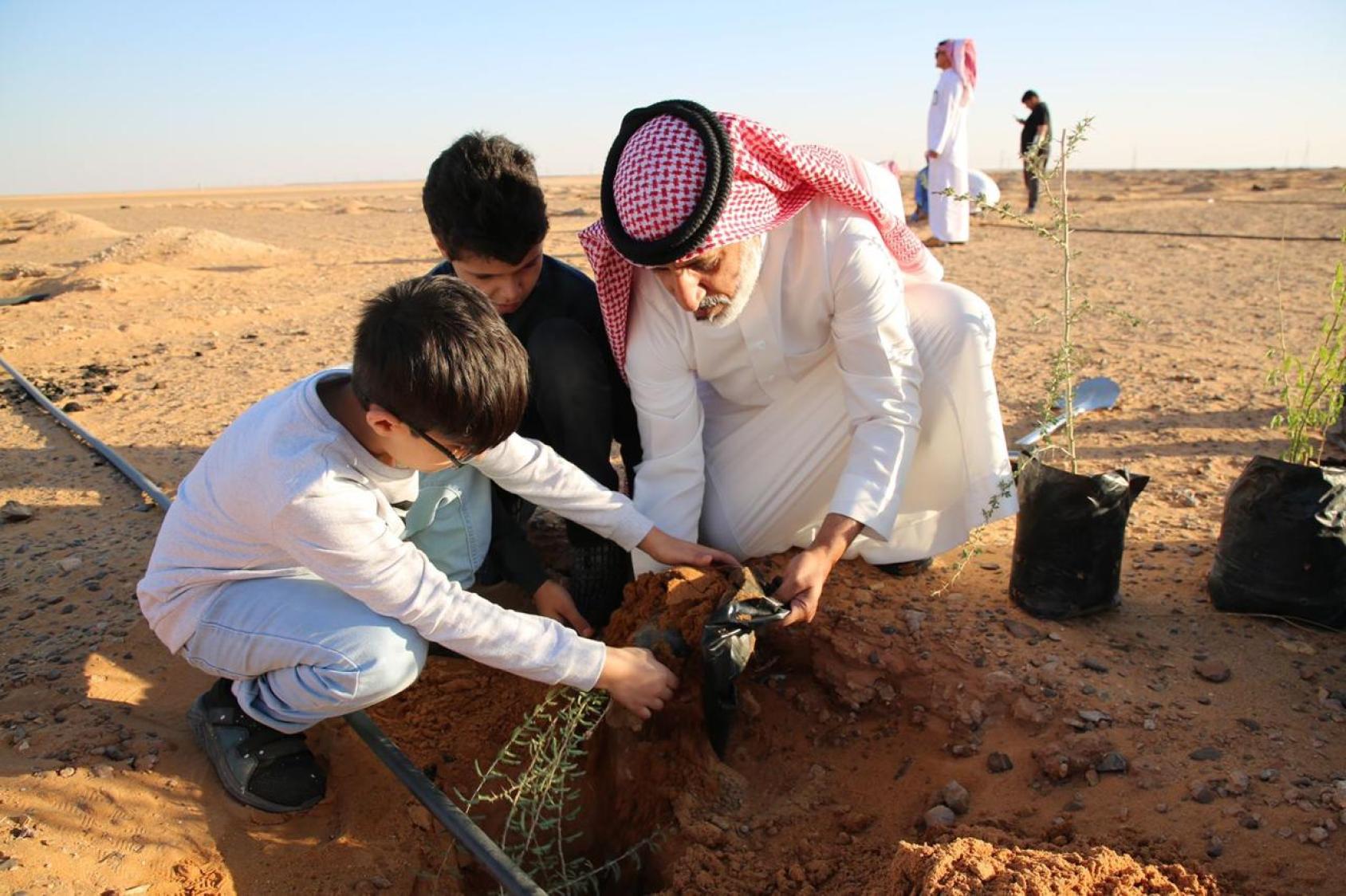
The FAO and NCVC provided expertise, technical guidance, and a distance training course, significantly improving the skill and knowledge of community members and the efficiency of work in the park. “
The community's significant increase in awareness led them to officially register the “Sidr Al-Jawf Association” as the “Sidr Wild Trees Association” with the status of a National Center for the Non-Profit Sector. A study trip to China to learn similar practices, organized by FAO and NCVC, has further motivated the community.
Naif Ahmed Alhanwsh: Guardianship of Saudi Biodiversity
It was Naif Ahmed Alhanwsh’s childhood dream to become a veterinarian. However, he never imagined he would play a pivotal role in safeguarding Saudi Arabia’s biodiversity. Now the veterinarian and director of the King Khalid Centre for Wildlife Research, located around 70 kilometers north of Riyadh, Alhanwsh is at the forefront of breeding, rearing, and releasing endangered native species.
“It is an indescribable feeling to release animals into their natural habitat. It is so beautiful,” says Alhanwsh. The King Khalid Centre, established on what was a royal farm in 1987, is home to some of the most iconic wild animals in the Arabian Peninsula, including large-hooved mammals like the oryx. Alhanwsh's efforts are part of an ambitious national plan to rewild Saudi Arabia and prevent further land degradation, demonstrating how individual dedication can contribute to broader environmental goals. Learn more about his story here.
Similar UN initiatives are helping promote innovative and resilient agricultural practices, ecotourism and more, empowering local farmers, cooperatives and communities.
Towards a Sustainable Future
As the world gathers under the banner of “United for Land,” marking the World Day to Combat Drought and Desertification on June 17th, Saudi Arabia’s local heroes and collaborative efforts serve as powerful examples of what can be achieved through dedication, collaboration, and community engagement. The road to restoring our planet’s lands is challenging, but these initiatives demonstrate the journey is worthwhile.
As we look towards COP16, this spirit of unity and resilience will be crucial in securing a sustainable legacy for future generations.
For more information about the UN's work in Saudi Arabia, visit saudiarabia.un.org
